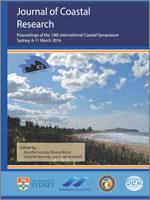Travassos, R.K.; Flores Montes, M.J.; Costa, B.V. M., and Silva Junior, J.M., 2016. The influence of urban effluents on the elemental C/N ratio in a tropical coastal area of northeastern Brazil. In: Vila-Concejo, A.; Bruce, E.; Kennedy, D.M., and McCarroll, R.J. (eds.), Proceedings of the 14th International Coastal Symposium (Sydney, Australia). Journal of Coastal Research, Special Issue, No. 75, pp. 168-172. Coconut Creek (Florida), ISSN 0749-0208.
The present study was performed in a tropical and highly eutrophic estuarine system in the urban coastal area of Greater Recife, Pernambuco, northeastern Brazil. Organic carbon is introduced into these urban estuaries through domestic and industrial sewage waste. One indicator of anthropogenic influence is the concentration of organic matter, including the suspended elemental forms of carbon and total nitrogen and the C/N ratio. The distribution of the concentrations of both particulate organic carbon and total nitrogen (POC and TN, respectively) were studied in two parallel transects in the estuarine plumes of Pernambuco's major rivers, the Capibaribe (CP) and the Jaboatão (JP), from 2010 to 2011. The archipelago of Fernando de Noronha, with relatively little human influence, was selected as the control area. The particulate organic matter exported via estuarine flow was defined by elemental carbon median values of 2.04% and 0.97%. The C/N ratio of the Capibaribe and Jaboatão plumes featured median values of 6.60 and 9.30, respectively. The principal components analysis (PCA) results suggest that the percentage of POC was influenced by rainfall and that the percentage of TN was influenced by the transport of suspended particulate matter. These differences may result from different loads of human activities and estuary transport dynamics, and the coastal region highlights the complexity of the distribution of organic matter in these environments.





